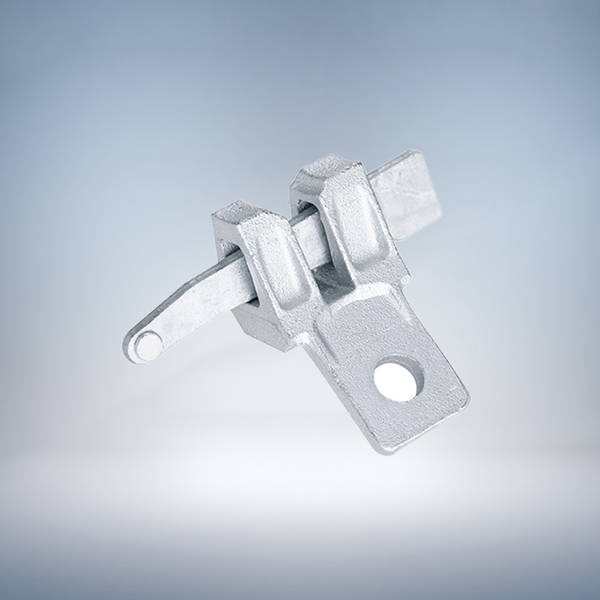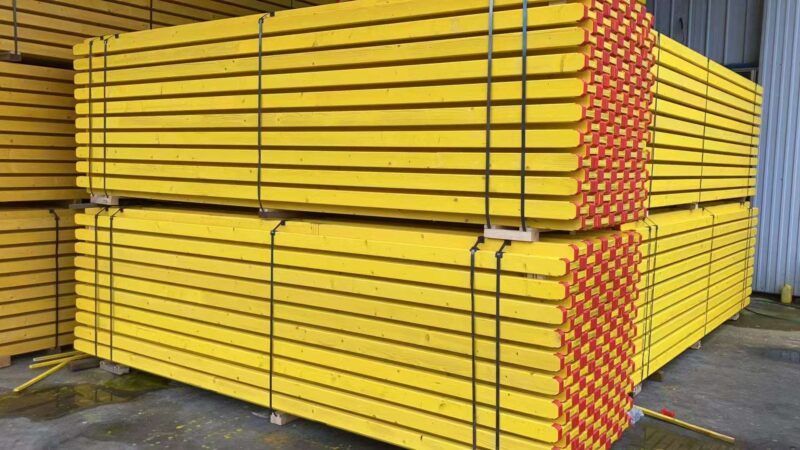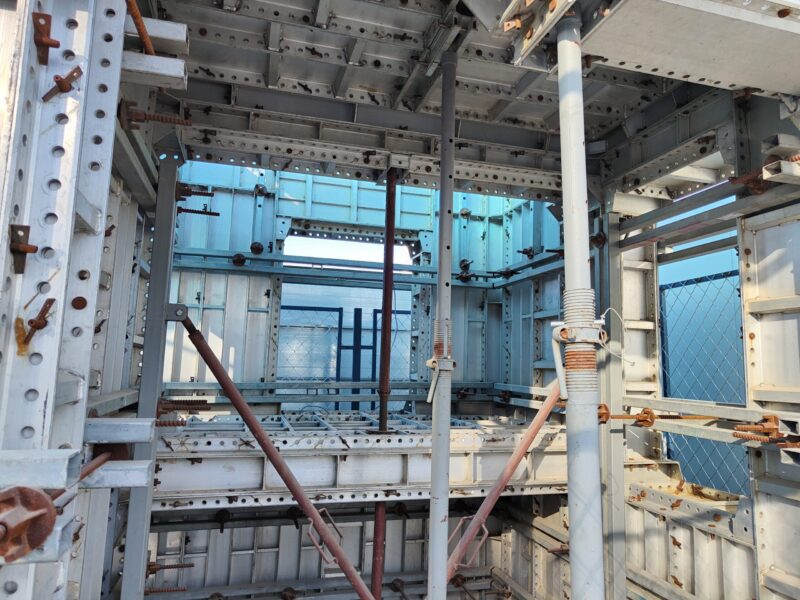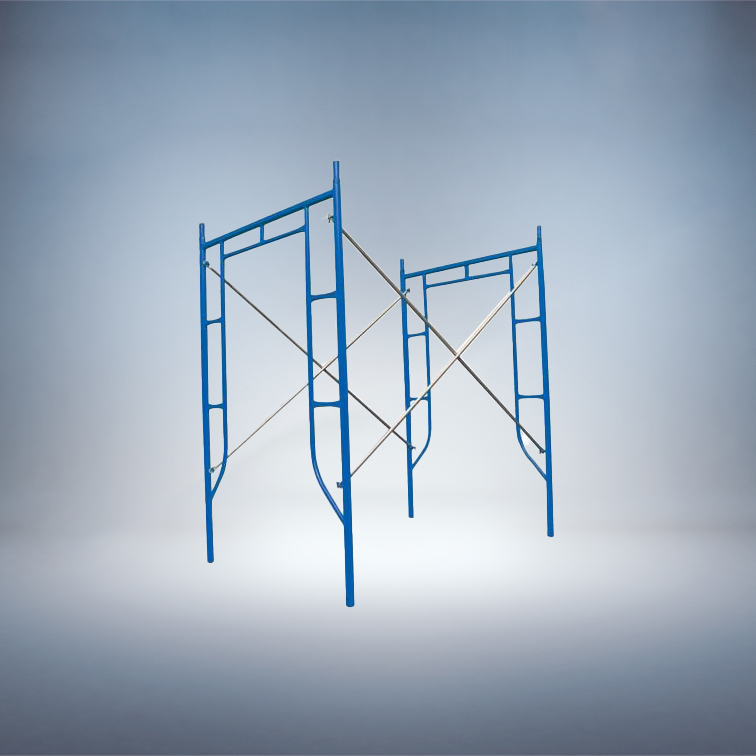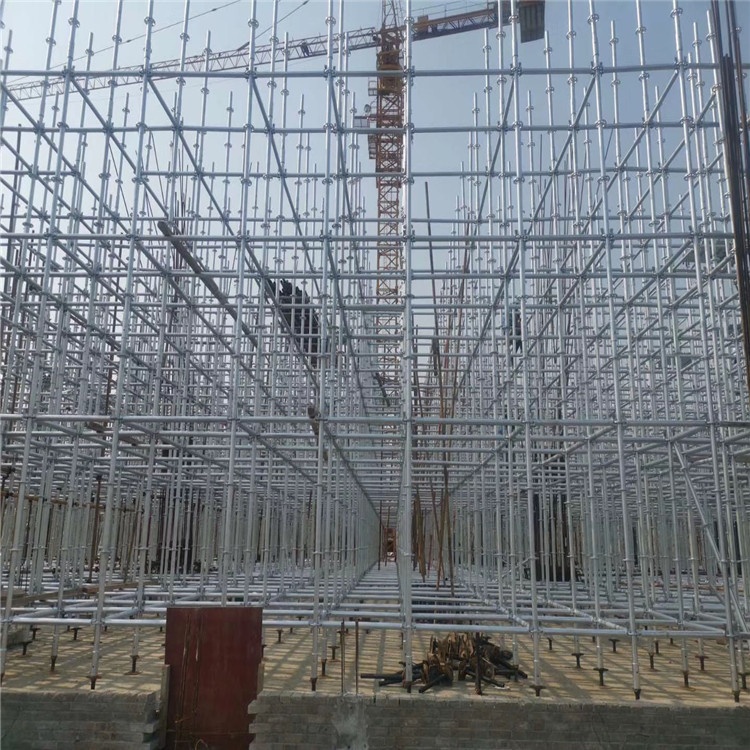Door Frame Scaffolding Safety Guide: Key Points from Proper Erection to Safe Use
Portal scaffolding is widely used for its quick assembly and mobility, but safety must be paramount throughout the entire construction, operation, and management process. Carefully follow this guide to ensure a safe and secure construction site.
Part 1: Standard Installation Procedure
Preparing the Foundation:
Ensure the ground is level, firm, and of sufficient load-bearing capacity. Soft surfaces must be compacted and a base plate must be used.
Adjust the base jacks so that all bases are supported on the same level.
Installing Frames and Braces:
Starting in one corner, erect the first frame and immediately install the cross braces to form a stable unit.
Installing adjacent frames and cross braces sequentially to extend the scaffolding. Ensure all connecting locks are fully tightened.
Cross braces should be installed continuously from bottom to top, in the same plane, to form a stable geometric structure.
Installing Ledgers and Ladders:
Install horizontal braces (if applicable) and built-in ladders according to the design to ensure safe and accessible access.
Building the Upper Level:
Follow the “level by level” principle. Before building the next level, ensure that all components of the next level are fully installed and secured.
The upper and lower frames must be aligned and securely connected using pins or locking arms.
Installation Platform and Safety Features:
The working platform (scaffolding board) must be fully paved and secure, and its ends must be properly secured to the scaffolding to prevent movement.
Guardrails and toeboards must be promptly installed on the outside of the working surface.
When the scaffolding exceeds a certain height or in windy conditions, it must be securely tied to the building structure.
Part II: Safety Precautions During Use
Overloading is Strictly Prohibited: Strictly adhere to the designed load capacity. Avoid concentrated heavy loads or the gathering of people.
Unauthorized Modifications are Prohibited: Do not remove structural components (especially cross braces and connectors) at will.
Moving Safety: Ensure that no one is on the platform when moving the scaffolding. Avoid collisions with power lines or obstacles.
Inclement Weather: Do not use the scaffolding in strong winds, heavy rain, or heavy fog. If necessary, reinforce or temporarily dismantle the scaffolding.
Safe Access: Always use built-in ladders or dedicated ramps. Never climb on cross braces or frames.
Part 3: Ensuring Ongoing Construction Safety
Implement Daily Inspections:
Competent personnel should inspect the scaffolding for visible deformation, loose connections, and effective castor brakes before the start of each day’s work.
Perform Regular Detailed Inspections:
A thorough inspection is essential after any event that could affect stability, such as inclement weather, impact, or prolonged inactivity.
Inspect structural integrity, connector corrosion, and the condition of the platform deck.
Strengthen Personnel Development:
Ensure all personnel involved in installation, use, and maintenance receive adequate safety training on the risks and procedures.
Improve Site Management:
Mark warning areas around the scaffolding to prevent impact with vehicles or materials.
By following these key points, you can maximize the benefits of portal frame scaffolding while ensuring safety throughout the construction cycle.
